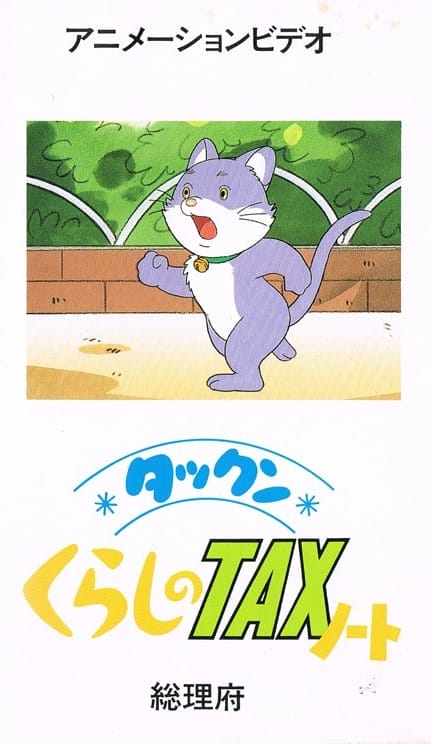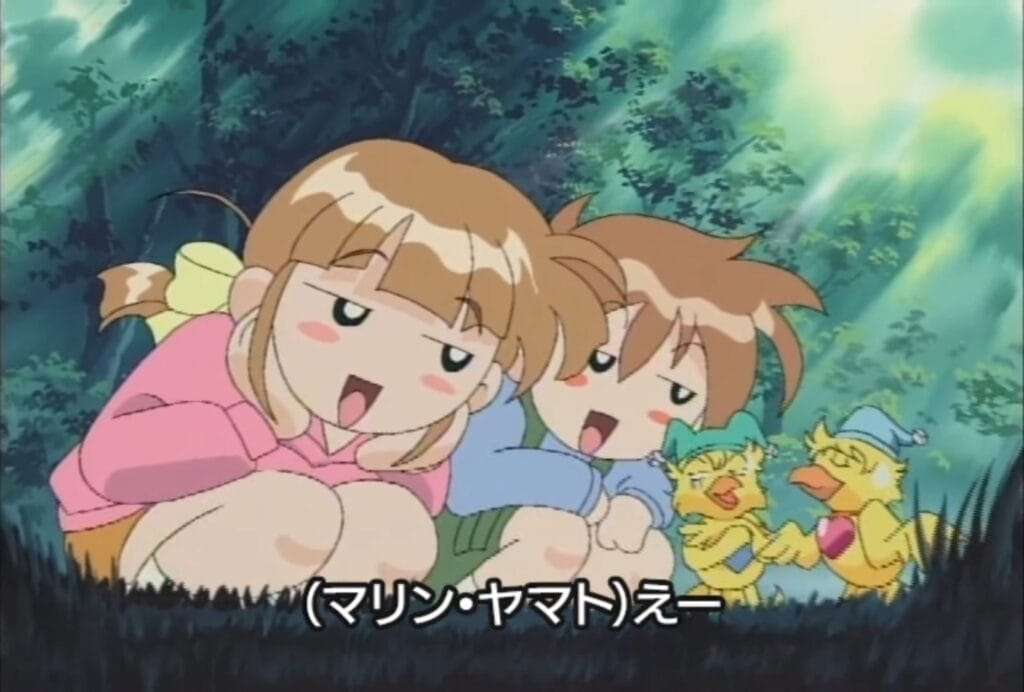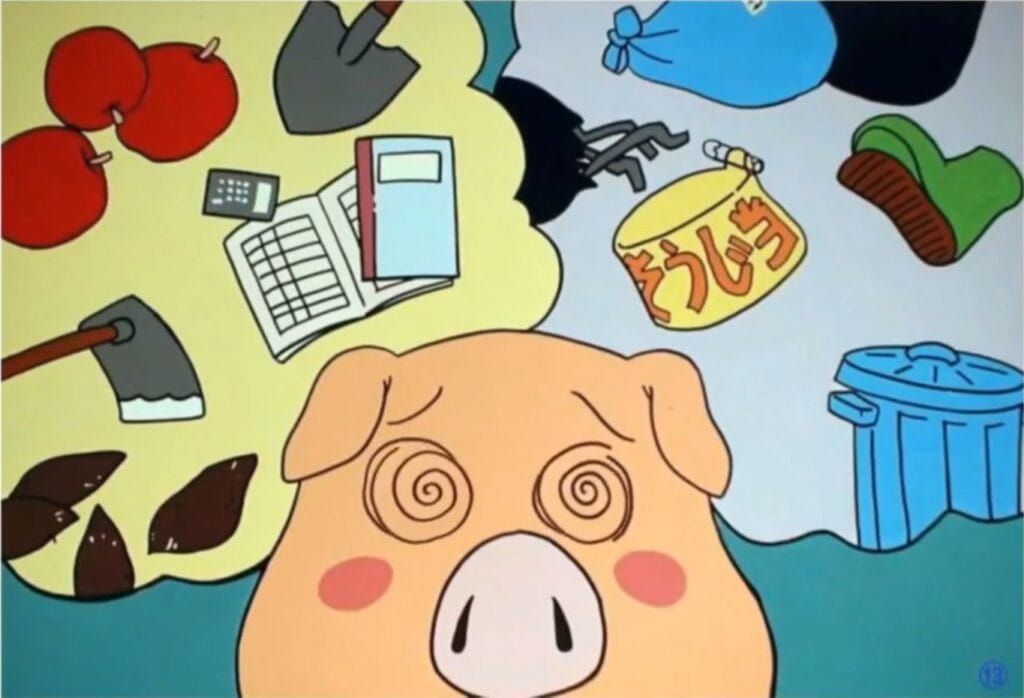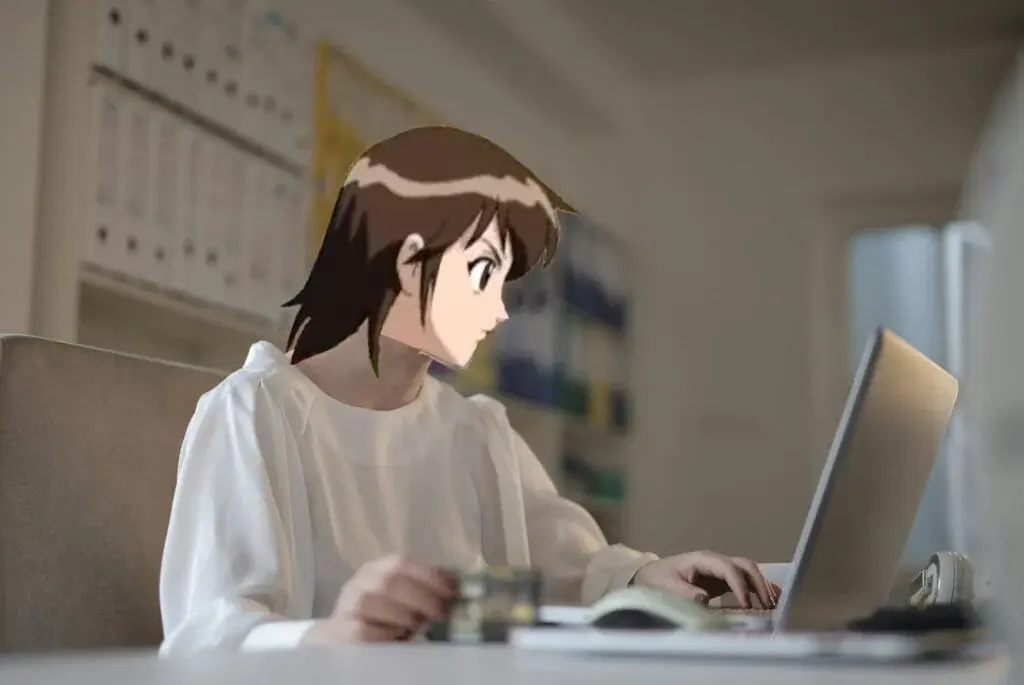In 1789, Benjamin Franklin wrote in a letter to Jean-Baptiste Le Roy, “In the world nothing can be said to be certain, except for death and taxes.”1 Unfortunately, Franklin failed to consider the certainty that anime would be made about taxes as it would take over a century from when he wrote that letter before the medium would even exist.
Post World War II, Japan had many debts it needed to repay and needed funds to help with reconstructing the country.2 Its national commodity tax system was confusing and the government wished to attempt the creation of a system where different products and services would be taxed at identical rates. While early attempts in 1980, 1985, and 1986 failed, Prime Minister Noboru Takeshita of the Liberal Democratic Party (LDP) would endorse the passage of the consumption tax law in 1989.
Despite a print and television advertising campaign, the Japanese government failed to make general consumers properly understand the consumption tax prior to its implementation in April, 1989, resulting in a lack of popularity for the new system.3 The move was so unpopular amongst voters that the LDP would lose the majorities it held in both houses of the Japanese Diet since 1955 in the July 1989 general elections.4 With the Japanese Socialist Party (JSP) in control of the House of Councilors, both sides were brought into an “extraordinary session” but were unable to find a compromise about the new tax system.5 The LDP were surprisingly able to keep control of the House of Representatives during the February 18, 1990 general elections despite the unpopularity of the consumption tax.
With compromise between the two parties seemingly unattainable, actions had to be taken to help improve the popularity of the consumption tax. One such step was the Prime Minister’s office, with supervision from the Ministry of Finance and the National Tax Agency, commissioning Dentsu Inc. to produce Takkun Kurashi no Tax Note which released in 1991. The 25-minute OVA used a cat named Takkun to show children and adults the variety of ways that the taxes they paid were useful.
An educational anime OVA was unsurprisingly not enough to sway the entire public opinion. In February 1994, Prime Minister Hosokawa Morihiro announced plans to implement a 7% national welfare tax to replace the consumption tax, which was revoked thirty-six hours later after the collapse of his political coalition.

Later that same year under Prime Minister Hosokawa Morihiro’s administration, the Diet passed a bill to increase the consumption tax from 3% to 4% with a further 1% increase set to hit in 1997.
Shortly after the 5% consumption tax hit, Japan entered a severe recession. While blame should be placed on the 1997 Asian Financial Crisis, some attributed it to the consumption tax increase. The National Tax Agency would once more turn to the power of anime to help sway public opinion by educating children. Marine to Yamato: Fushigi na Nichiyoubi would be added to the tax learning section of their official website in December, 2000.

The ONA tells the story of two children, Marine and Yamato, who inexplicably blame the consumption tax for an accident where they drop money into a sewer grate. The duo come upon and save two heavenly fairies named Koppy and Kuppy and are granted three wishes for saving their lives from a cat. One of those wishes is for there to no longer be taxes. The kids restart their day and see just how bad a world without taxes would be. Some examples include individuals being burdened with the full cost of firefighter services, strange men controlling roads and extracting tolls for their maintenance, and having to refuse an ambulance after getting into an accident for those who cannot afford it. (Who could imagine such a world existing?) In the end, the children decide to wish for a world where taxes exist once again and decide that taxes are actually a good thing.
The National Tax Agency would continue this anime-based education outreach with the release of Goannai Shimasu Another World e in 2004. When a belligerent drunk man wishes he could live in a world where taxes don’t exist, a mysterious figure grants his wish, transporting him to a tax free world. The man quickly sees the horror of massive potholes, children unable to afford going to school, and sees his life ruined when his house burns down because he doesn’t have a way to cover the firefighter fees. The malevolent man seemingly leaves the protagonist trapped in this terrifying world forever, chuckling evilly before the credits roll.

Prime Minister Junichiro Koizumi lifted a ban on discussing raising the consumption tax in 2005. This restoked fears among the public of tax increases potentially causing another major recession. The time was perfect for one last anime explaining the virtue of taxes: Sennen no Yakusoku. A thousand years ago, an evil nobleman in Japan was badly mistreating his people. Two magical cats came down from the sky and destroyed the nobleman’s country. They promised they would return on the same day 1,000 years later to see how humans had changed. If they are still as evil as they once were, their nation would be destroyed once again. Thankfully, taxes funding public services and goods that help people, convince the magical space cats in their giant robot cat spaceships that humanity is better and Japan is not destroyed.
While there have been several changes to the consumption tax since 2005, the National Tax Agency has no longer continued its tradition of commissioning OVAs and ONAs to help educate children on why taxes are good. These odd relics of the late 90s and early aughts offer insights into the way Japan has used animation to promote its tax system in comparison to American efforts like School House Rock’s “Tax Man Max” and are fascinating to watch. All three ONAs are still available to watch on the National Tax Agency’s official YouTube channel. Takkun Kurashi no Tax Note remains a VHS exclusive and has not seen another official release.


Bài viết liên quan
An Audit of Tax-Themed Anime aeasdasdasd
An Audit of Tax-Themed Anime